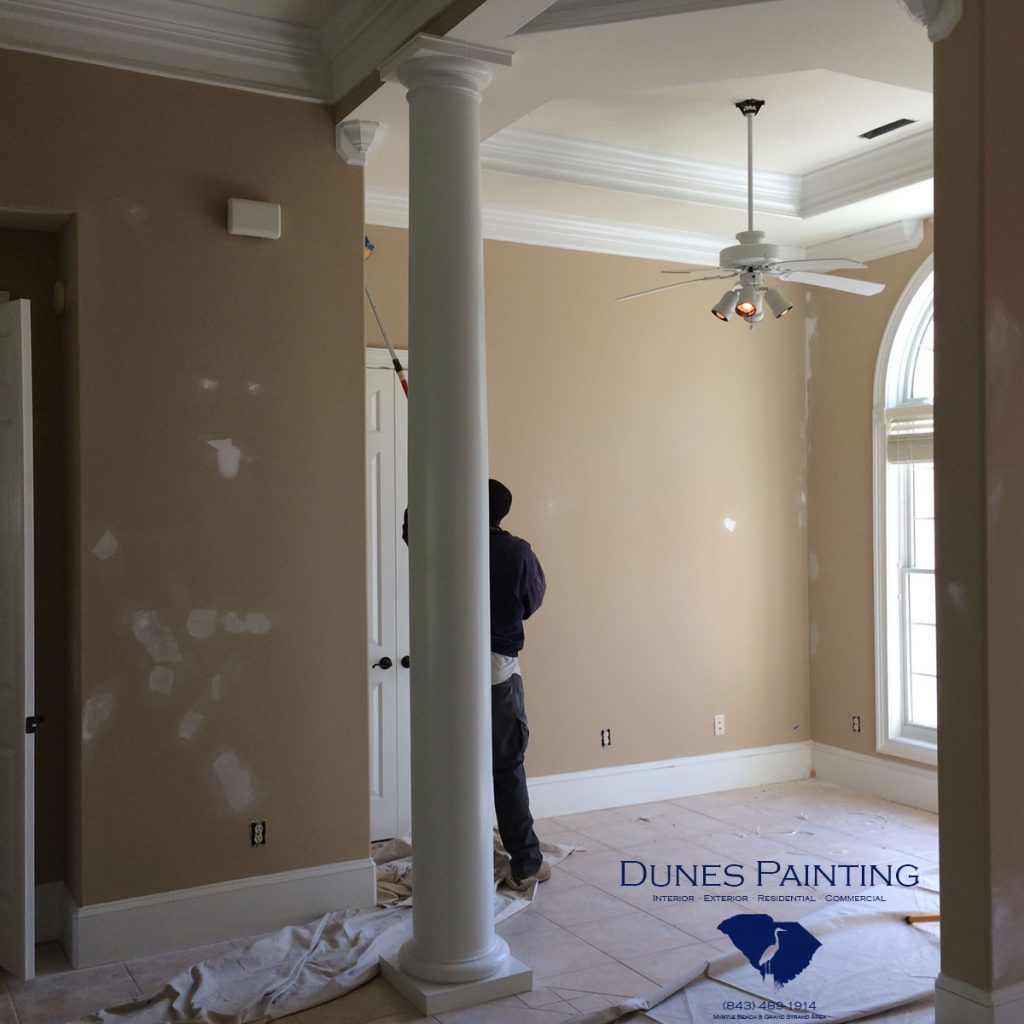Stucco is also known as render and it’s a decorative material which is used in order to coat ceilings and walls. It may also be utilized in order to create artistic and sculptural effects in architecture.
![]() Sometimes, stucco is added in order to mask the presence of other materials, including clay, brick, cinder block, concrete, clay brick and metal.
Sometimes, stucco is added in order to mask the presence of other materials, including clay, brick, cinder block, concrete, clay brick and metal.
Stucco is made from a binder, water and aggregates. If you’re interested in learning how to master exterior or interior stucco installation, you’ll find that our detailed guide provides lots of practical and helpful information.
Discover the History of Stucco
The ancient Greeks made art, such as masks of faces, from stucco. One face mask of this type dates back to the 2nd or 3rd century, BC!
Ancient Persians had a fondness for stucco reliefs which were ornamental and figurative.
Many great artists throughout history have utilized stucco in order to express their creativity. For example, Michelangelo’s great rival, Raphael, painted frescoes over stucco in four rooms in the Vatican City, using his own stucco “recipe”. The recipe was designed to mimic the stucco that Raphael saw while visiting an underground part of Nero’s Palace.
With stucco, art, architecture, construction and interior decoration often intersect.
Stucco is timeless and incredibly versatile!
Is Stucco Siding Right for You?

The benefits of stucco siding include fire resistance, rugged durability and easy maintenance.
One important tip is to make sure that you have enough stucco for the entire job before you start. Buy a bit extra just to be on the safe side!
When you mix stucco for siding, do so in a pail which holds five gallons. A big trough is another option. Then, add the stucco mix, water and sand. Mix it until it has a mud-like consistency. Then, put stucco on top of the lath with a trowel. Use pressure to force the thin cement into the lath. This will create a sturdy bond.
Stucco should be applied in swipes which are circular. Use the same circular motion for the whole surface. Begin in a corner and then keep going until the section is complete. If you let the stucco set before the whole surface is covered, application will probably look uneven.
Expect to apply a multitude of layers. When you do, your siding will be strong and thick.
How Is Stucco Siding Installed?
To install stucco siding, you’ll need to apply it on top of a wood lath or a wire lath. Usually, stucco for exteriors features a finish which is expansive and which is made from acrylic-polymer. The unique properties of stucco mean that it expands and contracts in response to weather changes. This is helpful in terms of minimizing cracks.
Most high-quality stucco siding lasts for five decades.
Stucco Adds Style to Walls and Ceilings

Stucco isn’t supposed to look perfect. It is meant to have a rough look, in contrast to plaster, which is supposed to look perfect. When you choose stucco, you will add character to your home while masking the imperfections in older plaster.
When you apply stucco to a home interior, it will go on gray. It will have the same hue as typical cement. However, you may paint it any shade that you like.
It’s also possible to tint the stucco before applying it and we recommend this. While you will still need to paint it after tinting, you’ll find that it’s easier to get the perfect shade when it’s tinted in advance of application.
How to Apply Stucco to Walls and Ceilings
To get things started, utilize patching plaster in order to fix crumbling wall or ceiling areas and in order to repair cracks. If your walls or ceiling have a gloss finish, you’ll need to remove the gloss with sand paper.
Next, put primer for flat sealing on the wall or ceiling. You may apply the primer with a typical paint roller.
After you follow these steps, it will be time to prepare the stucco. If you want to tint it, add wall paint which brings it closer to the color that you plan to paint it once it’s applied and dried. The perfect ratio for tinting is one cup of paint for each gallon of stucco.
Next, put the stucco on the wall or ceiling. Use a roller which is heavy. If you’re putting stucco on a wall, start at the top and work downwards. You’ll need to begin by spreading enough stucco to cover an arm’s-span area. You should put it on as thickly as possible.
Once the stucco is applied, press a trowel against the stucco. Make sure that the trowel is flat against the thin cement. Then, pull the trowel out in a straight motion. This motion will create the peaks and ripples that you want. Next, move your trowel over until it’s beside the section that you’ve just textured. Then, pull the trowel out in order to create another square with a rippled, peaked texture.
Repeat the trowel movement in different sections until you’ve textured the entire surface of the ceiling or wall.
The final step is applying another section of the material onto your wall or ceiling. Texture it with a trowel, section by section, until the entire surface is textured. If you want to paint it, wait for two to three days. The stucco will need to cure for a while before it’s ready for paint.
Should You Do It Yourself?
Most people find that it’s possible to apply stucco properly, even if they have no prior experience. However, there are certainly many contractors who will take care of things for you if you don’t want to do it yourself!
Now that you know more about stucco installation, you’ll be ready to get the job done right. This material is utterly classic and it’s also extremely rugged. It performs beautifully and looks wonderful, too.
So, why not add character to your home with stucco today?



